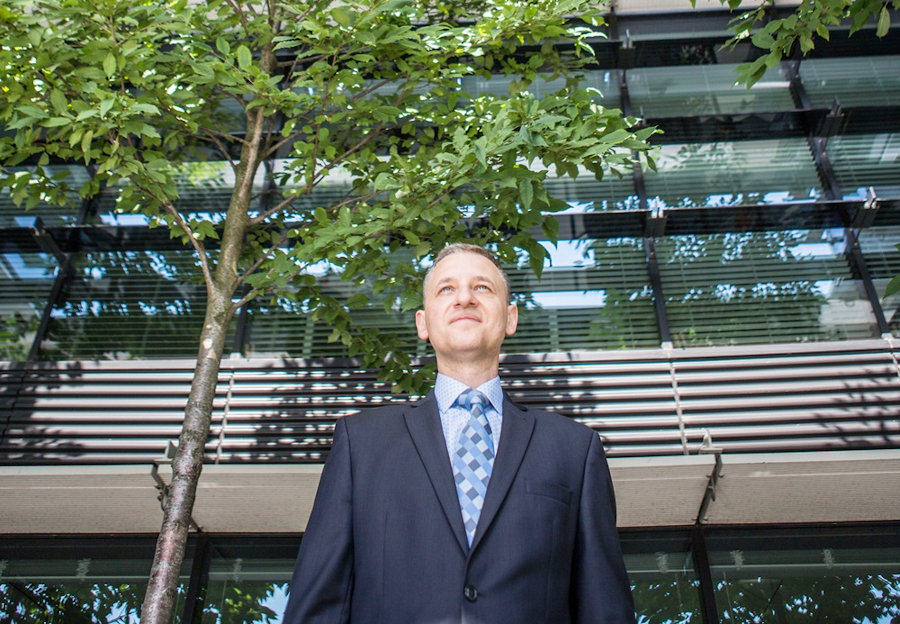One of the important aspects of owning SAP solutions is the issue of maintaining them in hygienic conditions. This term, which seems to be reserved for other areas of life, is also appropriate in this context. Usually, the systems in organizations operate in an almost unchanged environment for some time, most often since the implementation. Over time, it is more and more urgent to ensure the proper performance of the system that “lives” according to the rhythm set by the users working with it, completing it with data, and executing reports.
The creation and maintenance of such an environment requires adequate preparation, knowledge and financial inputs for both its ongoing maintenance and subsequent modernization or expansion. Each of these elements has a direct impact on the operation of not only a single system but the whole SAP landscape, which directly translates into business. In the end, however, the time comes when even the best tuned system is no longer fulfilling its primary task of ensuring the required productivity of end users. It becomes necessary to look for new solutions. However, they often do not provide clear answers to the question about the way to go so that the effect is at least satisfactory to the user, and the business is not adversely affected.
A system in the past and today
To better define the differences between an inefficient system and a fully functional system, it is recommended to perform a brief historical analysis and compare some technical parameters at the time the system was launched and today. The following values should be specified:
- a number of systems,
- database sizes,
- database access times,
- response times for the user (dialog).
By analyzing regressively, we will soon notice that although the system initially worked well, over time, the specified values began to change and tend to considerably increase despite the fact that there were no major problems.
An experienced administrator will immediately notice that the system will need to be upgraded. However, not every company has such a person.
If you have your own server infrastructure, you can take some steps right away, but you risk that the changes you make will not produce the expected results. The situation when the invested funds do not provide returns is highly uncomfortable and leads to losses. This happens regardless of whether the environment is physical or virtual. The only difference is that in the case of virtual environments you can, to some extent, shift resources between systems in the way that does not require special expenditure. Obviously, by taking resources for the production system, you accept the fact that the test or development system will lose some of its power.
In the organizations where the system landscape is small and consists of a single path, even the use of the virtualization technology will not reduce the problem. So is there a way to minimize the risk of system failure and to reduce the total cost of its maintenance?
The solution may be to migrate systems to a well-prepared and reliable partner, who will not only provide sufficiently large and efficient resources, but will also take care of the condition of the whole SAP environment. BCC (now All for One Poland) has been specializing in such solutions for many years. Randstad Poland decided to take this step.
High availability in the standard
The first step preceding the migration was to perform a quick analysis of the environment in terms of the expectations declared by the customer. For Randstad, the priority was the reduction of the cost of daily maintenance, high availability of systems, and improvement of business operations by increasing the quality of work for end users. Another element was the desire to migrate to a data center that would be accessible to users in different locations, and would also not be a barrier, for example when relocating the head or local office.
“As a leader in the HR services market, we cannot allow for inefficiencies in the operation of our systems that we use, for example, to calculate payroll for our customers’ employees,” says Tomasz Uzarski, IT Department Manager, responsible for maintenance and development of business applications, including SAP, at Randstad Poland. “In addition to the high quality in the operation of the systems, we also require their continuous availability. Such parameters were offered to us at the All for One Data Centers as the basic ones. That is why we decided to migrate our SAP environment to BCC.”

Tomasz Uzarski, IT Department Manager, Randstad Poland
Due to the specific nature of the SAP system environment at Randstad Poland, a number of analyses had to be made. Since the systems differed among themselves, it was necessary to individualize the approach to each one in order to optimize the process of migration to the All for One Data Centers. When migrating to a new virtual environment, great emphasis was placed on the optimization of systems. This applies to every layer of the architecture, that is, both to SAP systems as well as databases and operating systems. In this regard, BCC consultants had to demonstrate an understanding in approaching the customer’s specific business and environment.
In the system layer, the optimization process consisted in the distribution of resources of individual virtual machines in such a way as to ensure the optimal use of existing disk space for the database and applications, i.e. the SAP system. This apparently easy task entailed the need to create such virtual machines that would not be too demanding for virtualization while providing the expected level of performance. The new approach resulted in some changes in the system architecture and at the database level. During preparation for the migration, a series of tests were performed. They detected weaknesses in systems that could potentially decrease the overall performance. At this stage, the weaknesses were eliminated and conclusions were drawn with regard to possible migration scenarios.
An optimum action scenario
“One of the scenarios presented to us was the best one for us, since in addition to optimizing the system layer, it also included the data reorganization in the databases. This enabled us to save disk space, reducing the size of databases and significantly increasing their performance,” continues Tomasz Uzarski.
Indeed, the reorganization of the location and the structure of databases resulted in the better adjustment to the new virtual environment. It is also worth mentioning that building old systems anew in a new environment is a kind of refreshment. Speaking of overall performance in this aspect, we can expect a significant improvement, which also became a fact after the first successful migration. Database access times and response times of the first migrated system were by 50% better than those of the original source system. Database query time tests proved this definitely, and users confirmed this on the application side, i.e. in the SAP system.
The subsequent migrations differed slightly from the original one and required an individual approach to the system each time. BCC (now All for One Poland) consultants’ vast experience proved to be very helpful here.
The preparation for the production migration required the fulfilment of an additional boundary condition for this operation: the maintenance window time when the system could be unavailable. Due to the tight time limit, the decision was made to carry out a trial production migration to prevent any kind of emergency, which was positively assessed by the SAP Support team from Randstad Poland.
“The trial production migration was the key to smooth and seamless transfer of the entire SAP environment to the All for One Data Centers. After this operation, we were sure that both the migration process and the performance of the production system would meet our expectations, and that the time of system unavailability would coincide with the normal maintenance window. The use of the right scenario resulted in a highly efficient operation,” says Rafał Olechowski,

Project Manager and Senior SAP Specialist, Randstad Poland
Stably, transparently and predictably
After such testing, the migration of the production system was completely smooth and predictable. The system started operating stably in the new environment and it still does. The first tests performed by key users confirmed its proper operation even before the end of the time window dedicated to the migration.
“Migrated systems have been operating properly from the beginning, and their performance is confirmed by our users. For most of them, the whole process was completely transparent, exactly as it is in the case of standard maintenance windows. The signals we receive from them only confirm that the decision to transfer SAP to All for One Data Centers was right. Moreover, by using virtualization and much better virtual machines we have managed to significantly increase the performance,” confirms Rafał Olechowski.
After the first weeks of production operation of Randstad Poland’s SAP systems at the All for One Data Centers, the time came to make initial analyses. The data from statistical databases shows that the reorganizations made has been a key component of the performance improvement, while a fully virtualized environment has made it easy to adjust the resources required to achieve it. Suffice it to say that SAP Randstad Poland systems use Single Sign On (SSO) mechanisms, and this has forced the direct interoperation of the current environment with the one used so far, where users log on to the local domain. The use of modern solutions enables this interoperation to be maintained at the highest level.
Regular maintenance
As a complement to the SAP migration and continuation of efforts to ensure a high performance, a team of BCC consultants provides a full maintenance service for the system.
It should be emphasized that in the case of Randstad Poland migration to All for One Data Centers, strict conditions regarding both the availability of the systems and the manners of responding to any incidents had to be fulfilled. Each system operating at BCC is monitored intensively on a 24/7/365 basis. Any incident that occurs in the hardware, operating system, or application layer is immediately handled in the way completely imperceptible to the user.
The maintenance service allows not only for responding to incidents, but also for the management of SAP systems themselves so as to provide them with the best working conditions. Configuration changes are suggested to the customer on an ongoing basis to enable quick decisions about their implementation so as to ensure the proper quality of business operations.
As part of the maintenance service, BCC submits monthly reports on the quality of operation of Randstad Poland systems: “The information that is most sensitive to us about the condition of the systems is reported in a clear and synthetic way. Detailed technical reports for each system are automatically generated through SAP Solution Manager and we also receive them once a month or on demand. This significantly facilitates and accelerates the evaluation of the overall condition of our SAP landscape,” emphasizes Rafał Olechowski.
The analyzed data comes directly from monitored systems and is delivered in the form requested by the customer. All data is connected to the central SAP Solution Manager system of BCC. Automated monitoring and technical supervision by BCC consultants allows for responding to any incidents related to both the unavailability and malfunction of the systems. For example, responses to incidents related to system failures or reduced performance are made within several minutes. The information about the incident is immediately received by a consultant, who takes the appropriate steps to eliminate it. The analysis of monthly reports, which provides a broader view of the condition of the systems, is regularly performed by the system supervisor (coordinator) on the side of BCC. It is his/her task to provide the technical supervision on a regular basis.
The answer to the question whether it is worthwhile to migrate systems to external data centers is always dependent on customer expectations and reliable analyses made at the beginning. The experience of Randstad shows that the modern and secure infrastructure of the All for One Data Centers and the expertise of consultants can become an important ally of the company in pursuing its core business objectives.

Adrian Kaczmarski, ICT Director, Randstad Poland
Expected performance and availability
Randstad Poland provides temporary staffing and HR consulting services for its clients. Every day we employ about 30,000 employees, for whom we provide HR and payroll calculation services in SAP HCM. Therefore, effective processing of personal data and timely payment of salaries and wages is a fundamental issue for us. We considered various solutions, but in order to guarantee the expected performance and availability of the SAP system, we chose hosting at the All for One Data Centers. The migration process itself was a complex project and required comprehensive preparation. However, as the practice shows, good preparation and a professional partner translate into an end result. Migrated systems work well, and the virtual environment makes it easier to adjust resources to our needs.
Adrian Kaczmarski, ICT Director, Randstad Poland
Randstad Poland is one of the leading HR service providers. In addition to HR consulting, it also provides temporary staffing, specialist recruitment, payroll, human resources administration and employee leasing services as well as support of HR processes. The company has been operating since 1994 through a network of over 140 offices located throughout Poland. It is part of Randstad Holding founded in 1960 in the Netherlands, which is a global leader in HR services, specializing in flexible forms employment and HR consulting, and operating in 39 countries around the world.

